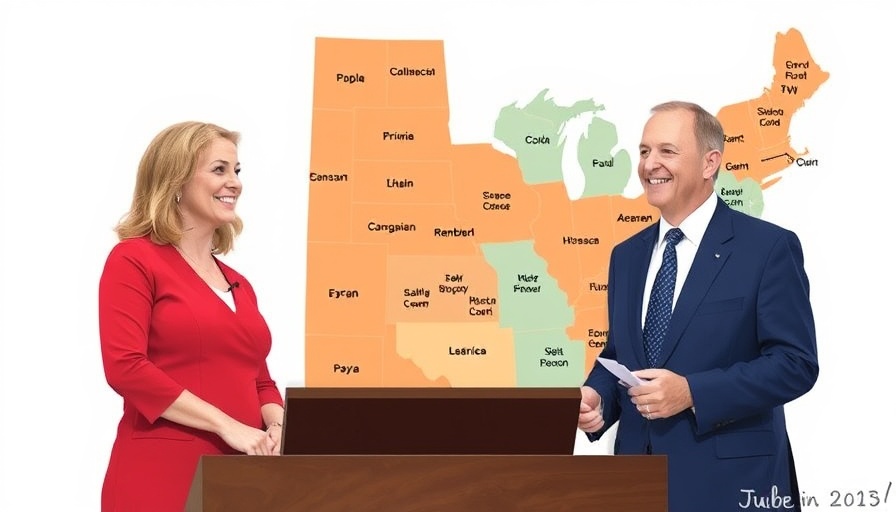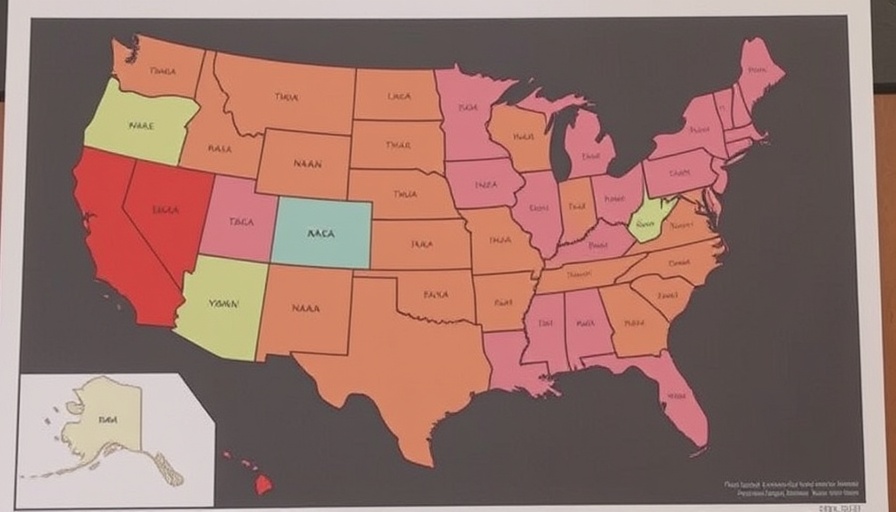
Understanding the Texas Redistricting Showdown
The Texas redistricting battle is intensifying, with its implications stretching far beyond mere map configurations. The decision by over 50 Texas House Democrats to flee the state highlights the stakes involved amidst a backdrop of potential political shifts.
Why Redistricting Matters for Texas Politics
Redistricting is a pivotal process that shapes congressional representation and can sway the balance of power at both the state and national levels. This year, Texas Republicans are not just aiming for a straightforward redraw of the lines; they are strategically looking to secure an additional five U.S. House seats. Such a shift could enhance the GOP's dominance, amplifying their influence on key votes affecting Texas and beyond.
A Closer Look at the Proposed Changes
Details of the proposed redistricting map reveal crucial shifts in major urban areas like Austin, Dallas, Houston, and South Texas. For instance, the districts currently held by Democratic leaders such as Henry Cuellar and Vicente Gonzalez are set to become more favorable for Republican candidates, stirring concerns among local communities about representation.
Communities at Risk
Democrats contend that the proposed lines will disenfranchise Black and Latino voters, splitting established communities and forcing them into districts that dilute their voting power. By altering the demographics of these districts, the GOP aims to weaken established Democratic strongholds, further intensifying the legislative brawl.
The Role of Leadership in Texas Redistricting
Governor Greg Abbott's directive to redraw the maps serves as a significant catalyst for the current standoff. The Trump administration's involvement adds another layer, underscoring the intersection of state governance with national political maneuvers. Abbott's threats to remove absent Democrats reflect an escalating commitment to asserting Republican control.
Political Consequences of the Standoff
The Republican majority in Texas is at a critical juncture. Lawmakers’ attempts to enforce civil warrants against their absent Democratic colleagues highlight the lengths to which they are willing to go to maintain their agenda. However, this dramatic showdown comes with financial ramifications and could spark voter backlash, especially among those who feel their representation is being compromised.
The Bigger Picture: Implications for 2026 Elections
Looking forward to the 2026 midterm elections, the redistricting process is poised to become a defining issue. Voter mobilization and registration efforts could see a shift as Democrats rally their bases to combat the perceived threats to their political representation. The outcomes of this legislative battle will resonate far beyond Texas, possibly influencing national political landscapes.
Actionable Insights: What Can You Do?
As engaged citizens, it becomes crucial to understand these dynamics and participate in advocacy efforts. Monitoring the unfolding legislative processes, contacting local representatives, and participating in civic forums could be vital in shaping the discourse around redistricting and ensuring fair representation.
Conclusion: A Call to Stay Informed
The Texas redistricting fight not only poses immediate challenges for lawmakers but also echoes in the broader narrative of democracy and representation. As developments continue, it is essential for residents to remain informed and engaged in the process, as every vote counts.
 Add Element
Add Element  Add Row
Add Row 



Write A Comment